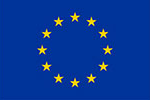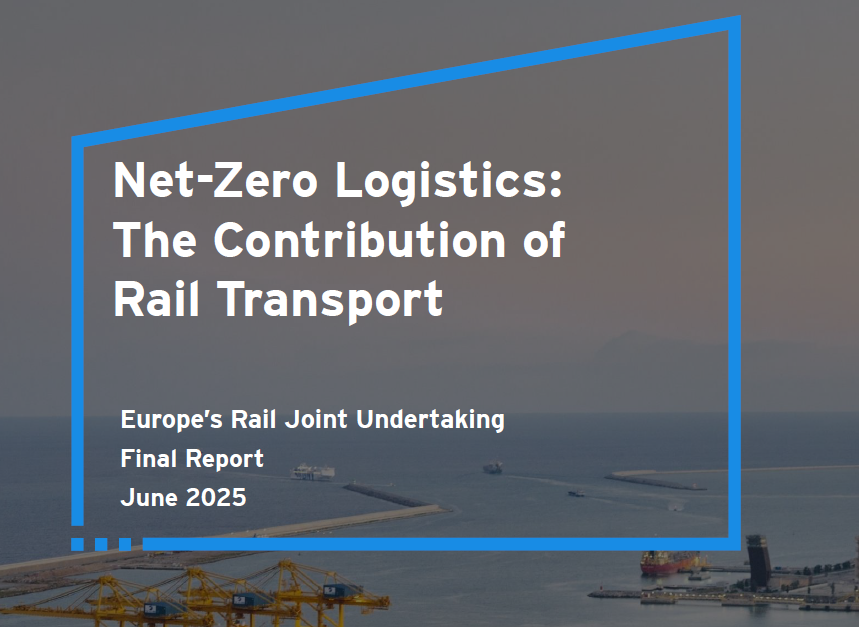Europe must take decisive steps to simplify and modernise its rail systems to strengthen competitiveness,...
To benefit the rail sector and its final users, our new MaDe4Rail project, worth EUR 1.4 million with 12 partners, is ready to explore non-traditional and emerging maglev-derived systems (MDS) and to evaluate the technical feasibility and effectiveness to introduce MDS in Europe under safety aspects and technical-economic performance. In this article, MaDe4Rail Coordinator, Giuseppe Carcasi, explains what to expect from the project.
Tell us what is encompassed in ‘Innovation on new approaches for guided transport modes’ and how is the MADE4RAIL project hoping to change the transport landscape in Europe?
Innovation within the railway system represents a strategic response to the evolving trends that are reshaping mobility. Firstly, there is a marked trend in demographic shifts, related to rapid urbanisation, which will amplify pressure on infrastructures and network services within urban areas in the domain of energy, information and communication technology (ICT), telecommunications (TLC), and transportation.
Similarly, current trends in the freight sector demand a re-evaluation of transport networks due to various factors such as GDP growth, expanding middle class in developing countries, infrastructure developments in Asia and Africa, reorganisation of logistic chains which are becoming more local and less global, circular economy growth, and the expanding e-commerce market. These dynamics demand new and more efficient freight transport services.
Moreover, it’s important to consider the growing emphasis on sustainability and decarbonisation. The transportation sector accounts for approximately 30% of EU energy consumption and CO2 emissions, with road transport being responsible for 90% of these emissions alone. Rail transport, particularly where electrified, is recognised as one of the greenest and most efficient modes of transport. However, achieving sustainability goals requires not only embracing green technologies and reducing consumption but mainly catalysing a substantial modal shift towards collective transport systems.
Furthermore, the exponential growth of digitalisation is fundamentally reshaping transportation by integrating digital technologies with infrastructures, systems, and services. This transformation holds promise for substantial productivity gains and new business opportunities, but also profound changes in individuals’ mobility habits.
The vision of Flagship Area 7 targets developing the next generation of railway and guided transport systems towards fully automated multimodal mobility solutions for passengers and goods. These systems are envisioned to be innately standardised, scalable, digital, sustainable, highly interconnected, and flexible in the transport offer, enabling new business models — such as on-demand services — to meet future users’ needs. Unlike approaches foreseen for hyperloop and traditional maglev systems, which require dedicated infrastructure and lack interoperability with railways, the MaDe4Rail project, seeks to enhance the existing railway system by exploring the integration of maglev-derived technologies into existing railway infrastructures, with the ultimate goal to reinforce railways as the backbone of the trans-European multimodal transport network by increasing its performances. The project, coordinated by RFI —the Italian railway infrastructure manager and leader of the Infrastructure Hub of the Ferrovie dello Stato Italiane (FSI) Group — has a value of EUR 2.56 million (by the Europe’s Rail Joint Undertaking) and was launched on June 30th 2023.
The proposed technical approach foresees the enrichment of the railway system through the integration of maglev-based levitation and propulsion technologies into the existing infrastructure following a principle of overlapping technological layers. This integration aims to implement technological, functional, and performance upgrades to existing lines and to ensure interoperability of pods with both the magnetic and traditional infrastructure by preserving the flow of traditional trains on the existing railway corridor. Once these solutions reach technological maturity, a phased upgrade of the network will become feasible, with the potential to gain significant cost and time savings of development projects in comparison to available alternative options while maximising the benefit-cost ratio of the investments.
Moreover, the integration of interoperable maglev pods operating on the existing railway infrastructure may lead to higher frequencies, reduced headways, and more flexible business models and operations, maintaining a high level of intramodality. Consequently, collective transport systems become more appealing, leading to an increase in modal share and more sustainable with reduced noise, vibration, and pollution. The performance parameters of these systems are currently under evaluation.
What are the three main objectives of MaDe4Rail and how will they facilitate improved, high-quality and reliable regional railways?
MaDe4Rail has three main objectives – technology exploration and identification of standardisation needs, impact assessment, and fostering an environment for the development of maglev-derived systems and their underlying technologies.
The first objective focuses on understanding the state of the art of the various technologies involved in the systems, their functionalities, and their technology readiness levels (TRLs). It also foresees the definition of a common system architecture, and identification of common technical and operational standardisation needs. The project aims to identify technologies that can be integrated into the railway system providing substantial benefits, to identify and assess risks related to their introduction, and to provide a gap analysis in terms of legal framework and applicable system standards. Additionally, the project seeks to define specifications for the vehicle subsystem of a Maglev Destination System (MDS) and, for one of the selected use cases, the project will go as far as to design a prototype for a vehicle and identification of interfaces between vehicle and infrastructure.
The second objective centres on evaluating the impacts derived from the implementation of MDS technologies through comprehensive use case analysis, evaluating technical and socioeconomic feasibility of those more promising, even proposing a possible implementation roadmap for such systems in Europe.
The third objective concentrates on advancing technologies to achieve higher TRLs to accelerate the reaching of market readiness at a faster pace. An industrial roadmap for the development of the systems and their underlying technologies will be proposed, towards the development of full-scale demonstrators — a clearly stated objective of the EU-Rail Multi Annual Work Programme within FA7. This is a crucial step to evaluate full technology integration within the new transport systems and their respective performances, and to facilitate commercial adoption ensuring a systematic approach to the development of complete systems.
Regarding regional railways it’s important to consider that small and medium cities are experiencing much faster growth rates than big cities, leading to an expected increase in transport demand outside of the current main mobility axes where important transport infrastructures have been deployed in the past (e.g., high-speed rail lines). In the long run, it’s likely that origin-destination matrices will become more dispersed, requiring an increase in the quantity and quality of services even on regional railway lines. When MDS solutions become technologically mature, they will enable a cost-effective upgrade of such railways with reduced implementation time and costs.
Can you explain how MaDe4Rail contributes to the European Green Deal and the Sustainable and Smart Mobility Strategy, of the European Commission?
MaDe4Rail significantly contributes to the European Green Deal and the Sustainable and Smart Mobility Strategy across various fronts of economic, social, and environmental sustainability.
Economically, MaDe4Rail prioritises the reuse of existing infrastructure, leading to reduced deployment costs and implementation time of infrastructure adaptation as well as anticipating the exploitation of the benefits associated with the new transport systems. It is for the moment assumed that this approach optimises resource utilisation by lowering capital expenditure (CAPEX) for network upgrades. Moreover, operating costs (OPEX) could potentially decrease due to increased automation, potential energy efficiency improvements, and reduced maintenance needs for vehicles and infrastructure. The project aims to lower generalised transport costs for final users by reducing travel times and promoting a modal shift towards more cost-effective modes like railways and MDS.
Socially, MaDe4Rail prioritises subsystems and technologies aimed at enhancing existing railway lines and technologies, thereby fostering greater territorial cohesion and socioeconomic development of the EU. This initiative not only improves performance and quality of the railway lines but also facilitates connections between small cities, making them more attractive. By strengthening connections between them and big city centres, MaDe4Rail opens access to economic and social opportunities for residents of smaller towns and rural areas.
Environmentally, MaDe4Rail aims to reduce pollution associated with noise, vibration, and metal dust traditionally related to wheel-steel friction. In addition, MDS offer energy-efficient alternatives to diesel trains, potentially facilitating the electrification of lines and railway/port yards. While evaluating specific energy consumption metrics, the project aims to determine if MDS offers lower energy consumption per passenger kilometre compared to conventional transport modes.
What are some the main challenges MaDe4Rail will have to overcome?
One of the key challenges that the MaDe4Rail project has faced is ensuring a neutral technological approach, mitigating possible influences that tech-developers may induce on the project. To this effect, structuring the project around the strategic interests of the railway sector is vital.
Harmonising divergent technological approaches is also crucial for integration, as is ensuring compatibility with existing railway systems. These new approaches might require the creation of regulatory frameworks and technical standards for new transport systems, which complicates technology and performance assessment and necessitates the definition of new standards (or at least in the first stages, reference technical parameters).
The work is essential for catalysing the achievement of commercial TRLs and shaping the evolution of these advanced technologies in the direction of meeting the needs of the railway sector, but also to provide stakeholders with information elements useful for decision-making.
When can we expect to see the first results coming from the MaDe4Rail and what will these results cover?
MaDe4Rail is set to conclude its activities in the summer of 2024 and will produce the first official results related to the research on maglev-derived systems from the Flagship Area 7. These outcomes will include, among others, the identification of existing maglev and maglev-derived systems and technologies, the definition of a common system architecture and the assessment of technology readiness alongside the formulation of an industrial roadmap. Additionally, MaDe4Rail will present designs for a maglev-derived vehicle prototype and conduct technical and socioeconomic feasibility studies for three specific use cases across Europe. Ultimately, the project aims to deliver an implementation roadmap to guide the integration and deployment of MDS within the European transportation landscape.
Based on the prediction of the project, when will we see these solutions deployed in the current mobility system and are there any challenges of integration?
Tech developers participating in the MaDe4Rail project are actively conducting tests and demonstrators on systems with higher TRLs, suggesting potential commercialisation within the next 5 to 10 years. EU-Rail’s Multi Annual Work Programme targets achieving at least a TRL6 for Maglev-derived systems by 2031, though adjustments may occur based on the results of MaDe4Rail’s industrial roadmap and further actions that could occur within and outside Flagship Area 7. Challenges related to integration include technological complexity, some regulatory gaps for the new system and ensuring compatibility with existing infrastructure and safety standards. Therefore, it is crucial to target full-scale demonstrators to ensure seamless system integration. Addressing these challenges is imperative for integrating effectively and rapidly such innovative solutions into the railway system.
How is MaDe4Rail interacting with the EU-Rail Flagship Projects and the System Pillar?
MaDe4Rail mainly interacts with the System Pillar through Work Package 5 which defines requirements to reach compatibility and integration within the railway system. This interaction aims to ensure alignment within system architecture definitions and railway operational standards. Additionally, MDS in the scope of MaDe4Rail rely on developments from other Flagship Areas such as ATO, Future Railway Communication Systems, TMS, and DAC, emphasising the importance of compatibility and coordination across projects.
What are the benefits of the final users when using these technologies?
The utilisation of technologies in the scope of MaDe4Rail could bring several benefits for final users and so far, evaluations are extremely promising. However, it’s important to approach these benefits with caution, recognising that they are subject to further assessments. For instance, improved vehicle dynamics during acceleration and deceleration could lead to smoother rides, while increased speed along the same line alignments may enhance travel efficiency, potentially resulting in reduced travel times. In addition, there is the possibility to build new, flexible transportation services emerging as disruptive business models. Furthermore, these technologies have the potential to contribute to sustainability efforts by offering sustainable and efficient travel options that could compete with air and road transport. In terms of freight services, users could benefit from the usage of lines with higher inclines, allowing access to more routes and optimising rail freight transportation. Levitating pods with similar performances when carrying both freight and passengers could also enhance operations, maximising capacity usage and improving the overall efficiency of the transportation system.
















